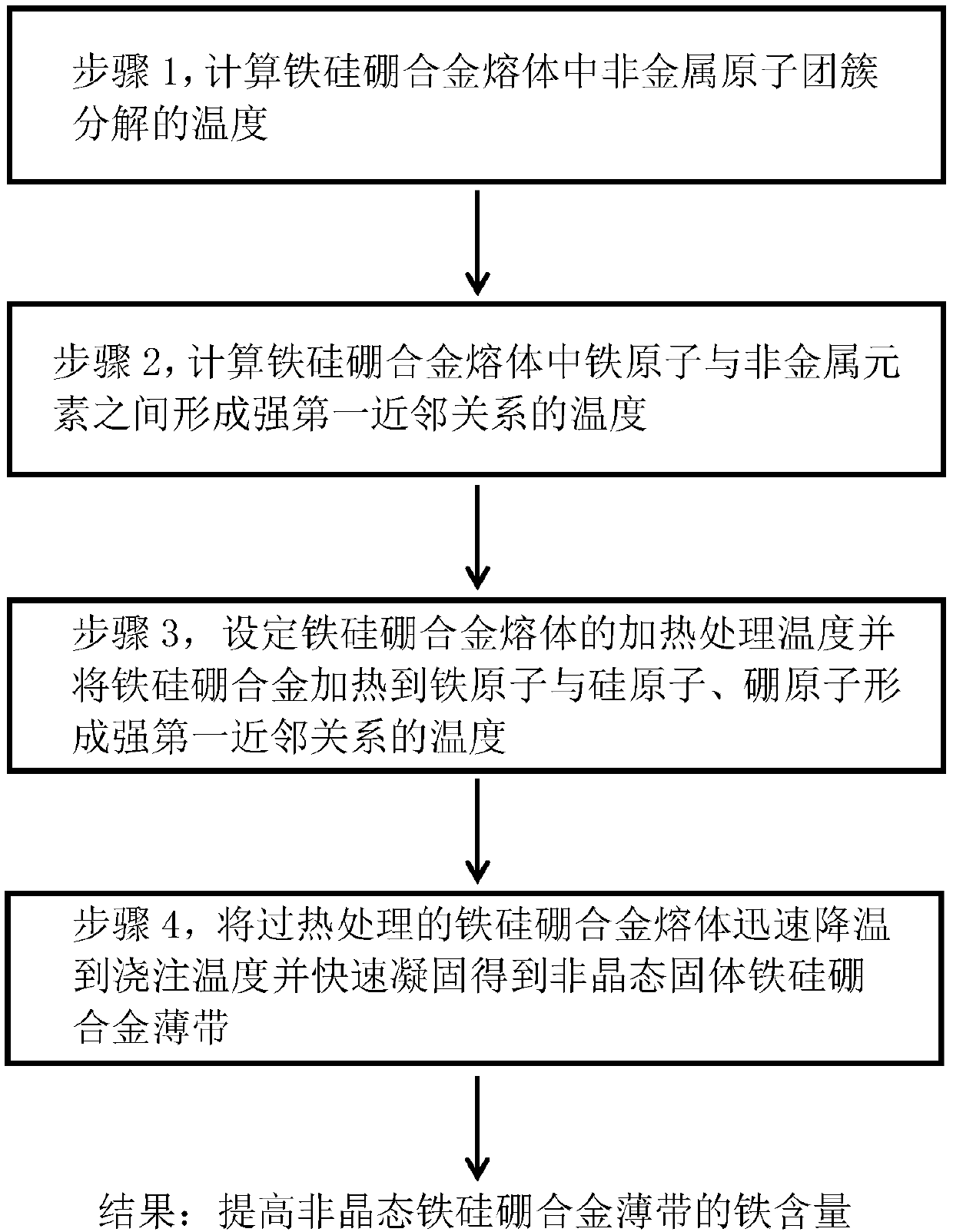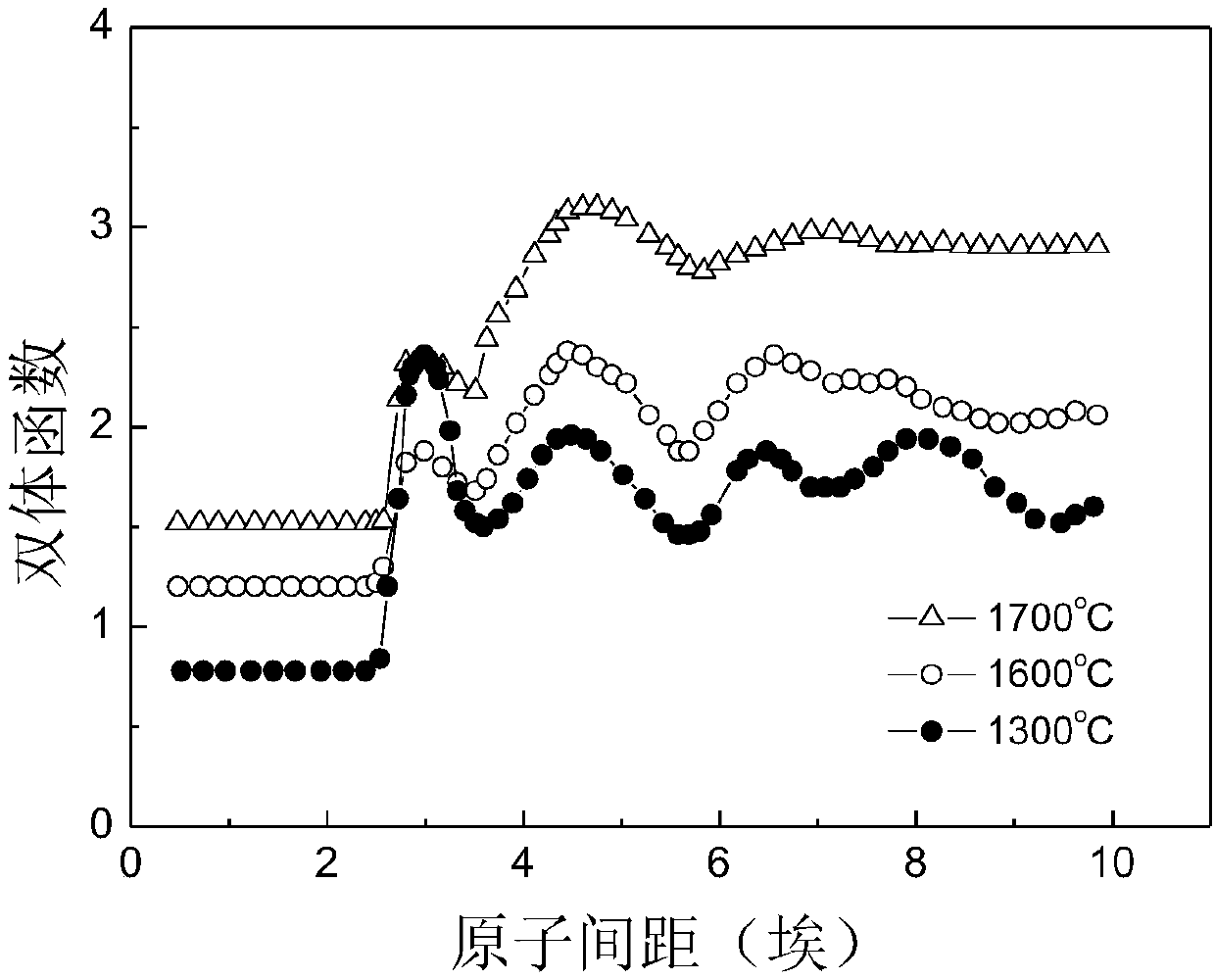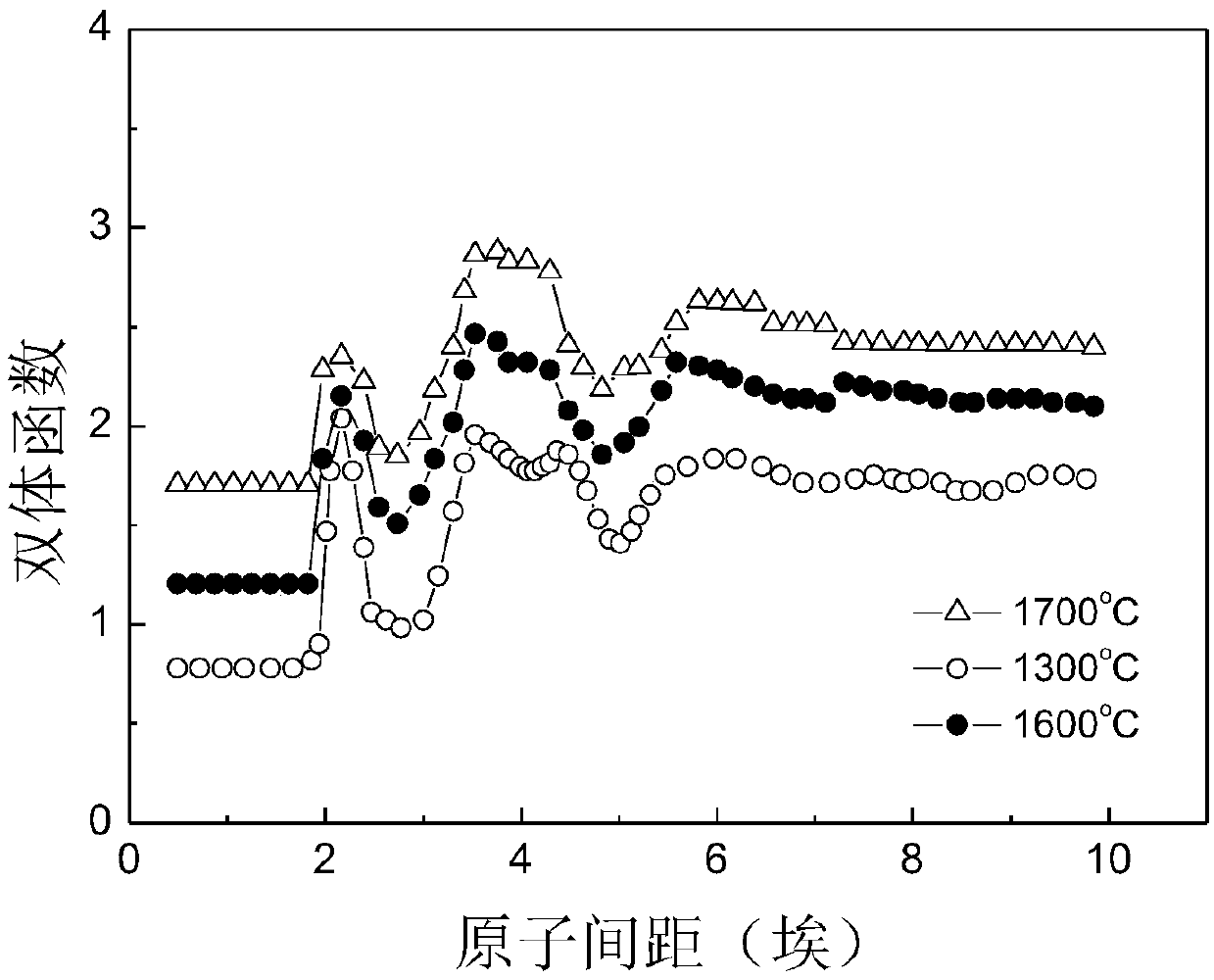A process for increasing iron content in amorphous iron-silicon-boron alloy strip
A silicon boron alloy, amorphous iron technology, applied in the field of metal functional material preparation, can solve the problems of enhancing the ability of non-metal elements to form amorphous structures, inability to improve the distribution of non-metal elements, etc., to achieve controllability and The effect of strong repeatability, high technical reliability and easy implementation
- Summary
- Abstract
- Description
- Claims
- Application Information
AI Technical Summary
Problems solved by technology
Method used
Image
Examples
Embodiment 1
[0036] Embodiment 1: adopt amorphous solid alloy Fe 85 Si 9 B 6 Thin strip (the subscript number in the chemical formula is at%), the amorphous solid alloy Fe 85 Si 9 B 6 The thin strips are prepared by the high-speed planar flow continuous casting method commonly used in this field. Next, the specific operation steps of using the processing method of the present invention are as follows:
[0037] Step 1, calculate the temperature at which the non-metallic atomic clusters in the iron-silicon-boron alloy melt decompose: there are non-metallic atomic clusters at the initial stage of melting of the iron-silicon-boron alloy, and the non-metallic atomic clusters refer to iron atoms and non-metallic atomic clusters in the iron-silicon-boron alloy melt. Metal atoms form first-neighbor relationships; calculation of Fe using first-principles molecular dynamics simulations85 Si 9 B 6 The two-body function of non-metal atoms in the alloy melt changes with temperature, and the heat...
Embodiment 2
[0047] Embodiment 2: adopt amorphous solid alloy Fe 85 Si 9 B 6 Thin strip (the subscript number in the chemical formula is at%), the amorphous solid alloy Fe 85 Si 9 B 6 The thin strips are prepared by the high-speed planar flow continuous casting method commonly used in this field. Next, the specific operation steps of using the processing method of the present invention are as follows:
[0048] Step 1, calculate the temperature at which the non-metallic atomic clusters in the iron-silicon-boron alloy melt decompose: there are non-metallic atomic clusters at the initial stage of melting of the iron-silicon-boron alloy, and the non-metallic atomic clusters refer to iron atoms and non-metallic atomic clusters in the iron-silicon-boron alloy melt. Metal atoms form first-neighbor relationships; calculation of Fe using first-principles molecular dynamics simulations 85 Si 9 B 6 The two-body function of nonmetal atoms in the alloy melt changes with temperature, and the hea...
Embodiment 3
[0058] Embodiment 3: adopt amorphous solid alloy Fe 85 Si 9 B 6 Thin strip (the subscript number in the chemical formula is at%), the amorphous solid alloy Fe 85Si 9 B 6 The thin strips are prepared by the high-speed planar flow continuous casting method commonly used in this field. Next, the specific operation steps of using the processing method of the present invention are as follows:
[0059] Step 1, calculate the temperature at which the non-metallic atomic clusters in the iron-silicon-boron alloy melt decompose: there are non-metallic atomic clusters at the initial stage of melting of the iron-silicon-boron alloy, and the non-metallic atomic clusters refer to iron atoms and non-metallic atomic clusters in the iron-silicon-boron alloy melt. Metal atoms form first-neighbor relationships; calculation of Fe using first-principles molecular dynamics simulations 85 Si 9 B 6 The two-body function of non-metal atoms in the alloy melt changes with temperature, and the hea...
PUM
| Property | Measurement | Unit |
|---|---|---|
| thickness | aaaaa | aaaaa |
| width | aaaaa | aaaaa |
Abstract
Description
Claims
Application Information
 Login to View More
Login to View More - R&D
- Intellectual Property
- Life Sciences
- Materials
- Tech Scout
- Unparalleled Data Quality
- Higher Quality Content
- 60% Fewer Hallucinations
Browse by: Latest US Patents, China's latest patents, Technical Efficacy Thesaurus, Application Domain, Technology Topic, Popular Technical Reports.
© 2025 PatSnap. All rights reserved.Legal|Privacy policy|Modern Slavery Act Transparency Statement|Sitemap|About US| Contact US: help@patsnap.com



